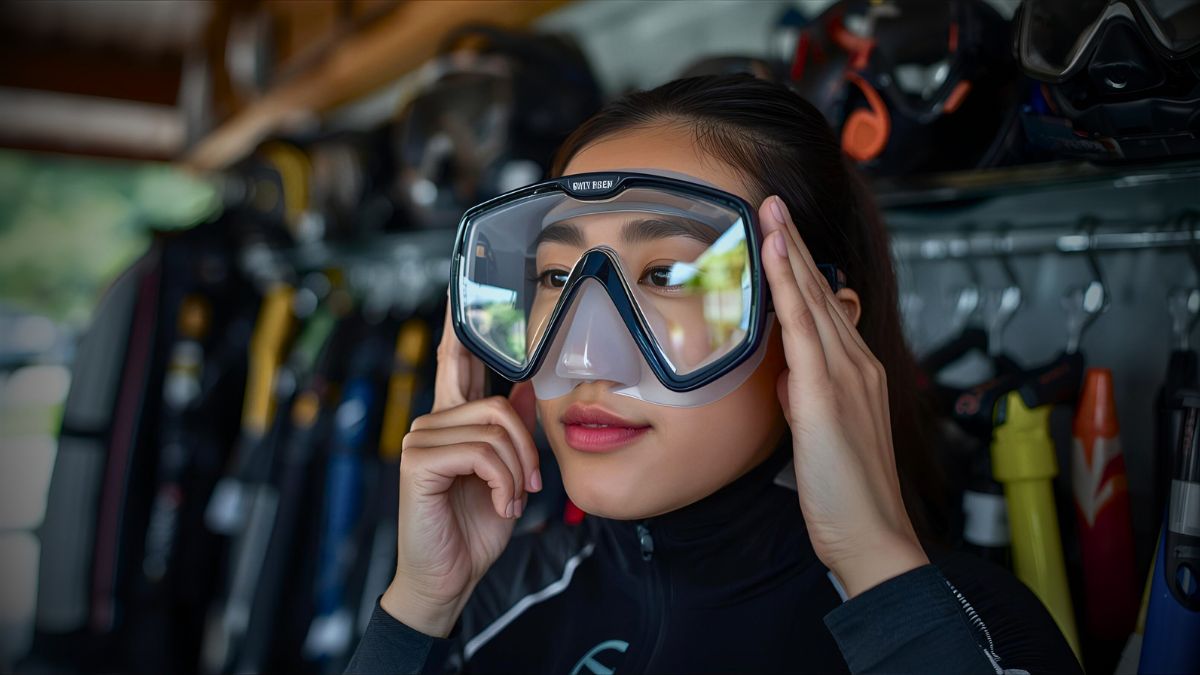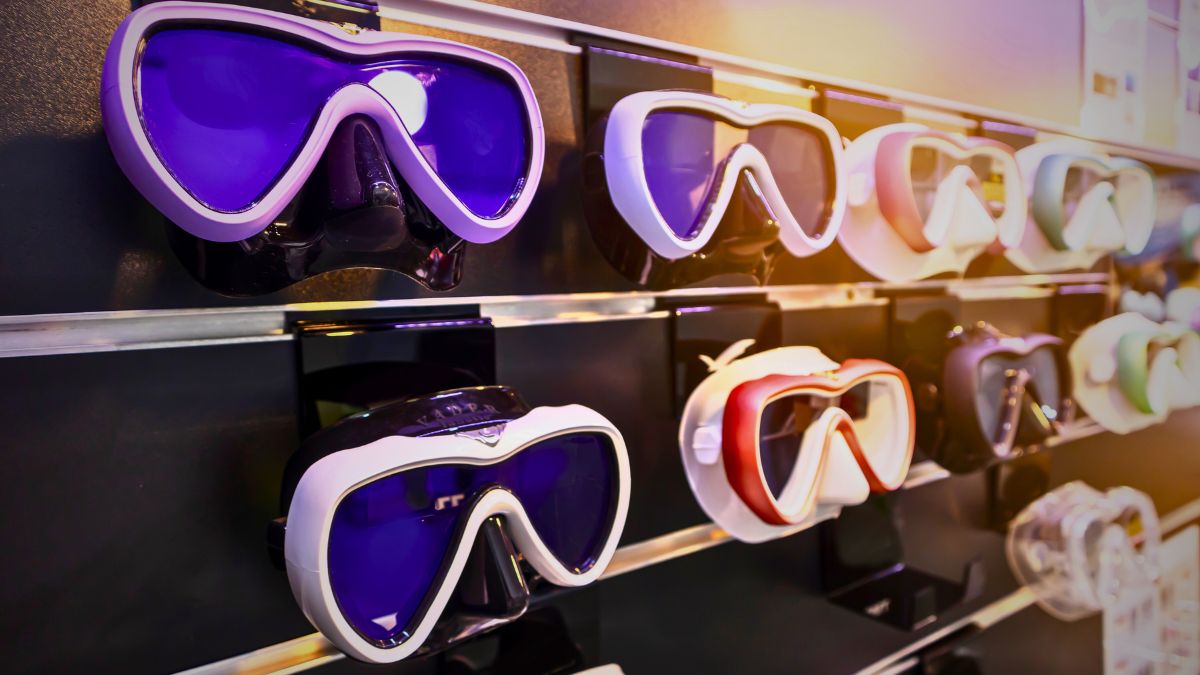I still remember the first time I saw a bleached coral reef. It happened about eight years ago during what should have been a routine dive off Costa Rica’s Pacific coast. The reef looked like a ghost town.
White, lifeless structures stretched across the ocean floor where vibrant colors once thrived. That dive changed how I think about everything I bring into the water. Especially sunscreen.
Planning a beach vacation? A snorkeling trip? A diving adventure in Costa Rica? The sunscreen you pack matters more than you might realize. The wrong choice can contribute to the destruction of the underwater world you came to see.
This guide covers everything you need to know about reef safe sunscreen. What actually makes sunscreen safe for coral reefs. Which ingredients cause the most damage. How to choose products that protect both your skin and marine ecosystems.
What Is Reef Safe Sunscreen?
Reef safe sunscreen is sun protection formulated without chemicals known to harm coral reefs and marine life. These products typically use mineral-based ingredients like zinc oxide and titanium dioxide instead of synthetic chemical filters.
Here is the tricky part. No government agency regulates the term “reef safe.” The FDA does not define it. No international standard exists. Any company can put “reef safe” or “reef friendly” on their packaging without proving the product actually protects marine ecosystems.
Many reef-safe sunscreens are a scam
A 2020 analysis found that nearly half of sunscreens marketed as “reef safe” still contained ingredients failing environmental safety standards set by NOAA.
So how do you know if your sunscreen truly qualifies?
You read the ingredients. Every single time.
A genuinely reef safe sunscreen uses only non-nano zinc oxide or non-nano titanium dioxide as active ingredients. Nothing else. If you see any chemical UV filters listed, that product is not reef safe. The front label claims do not matter.
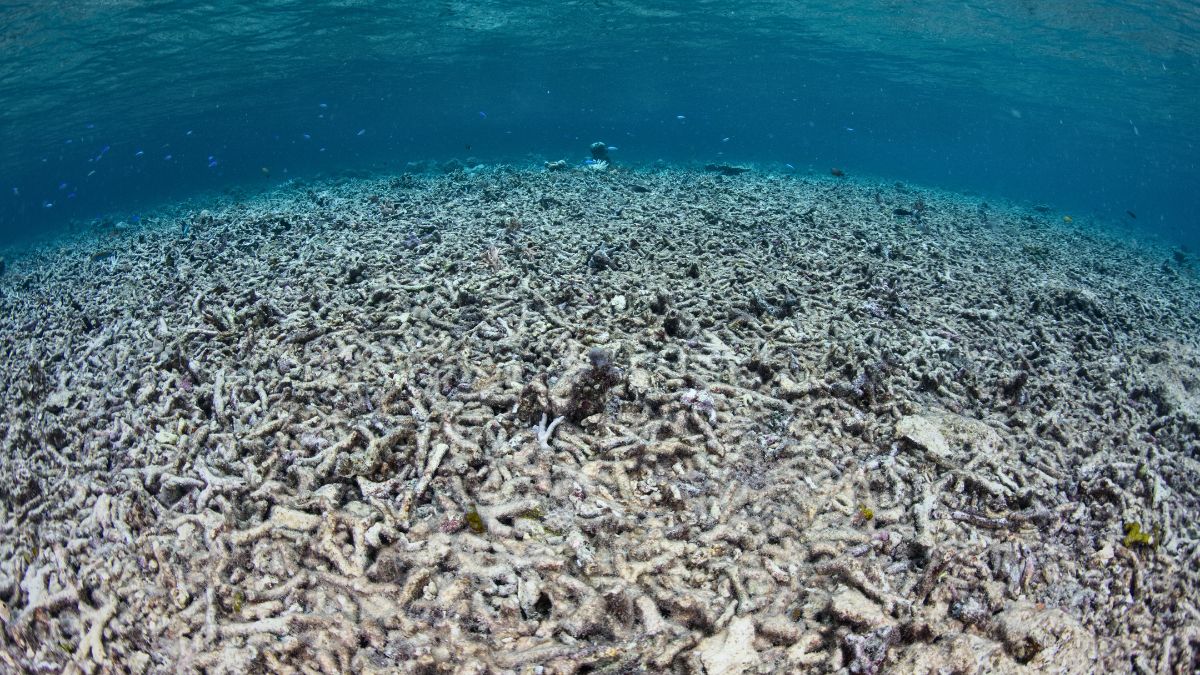
Why Should You Care About Your Sunscreen Choice?
The numbers are staggering. Scientists estimate between 6,000 and 14,000 tons of sunscreen wash into coral reef environments every year. That equals roughly 25 to 60 million bottles annually entering our oceans.
Sunscreen does not stay on your skin when you swim, snorkel, or dive. It washes off. Research shows only about 4% of common sunscreen chemicals like oxybenzone actually absorb into your body. The remaining 96% ends up in the ocean.
Popular tourist destinations see chemical concentrations high enough to cause measurable damage. One study found that a single drop of oxybenzone in water equivalent to six Olympic swimming pools was enough to stress and damage coral larvae.
Did you know? Costa Rica protects over 25% of its territory in national parks and reserves. The country’s marine protected areas shelter some of Central America’s most biodiverse reef systems, home to over 6,700 marine species.
How Does Sunscreen Damage Coral Reefs?
Coral reefs are not rocks. They are living animals. Tiny organisms called coral polyps build the limestone structures we recognize as reefs. These polyps share a symbiotic relationship with microscopic algae called zooxanthellae living inside their tissues.
The algae provide corals with up to 90% of their energy through photosynthesis. Corals give the algae a protected home and nutrients in return. This partnership also creates the brilliant colors we associate with healthy reefs.
Certain sunscreen chemicals disrupt this delicate relationship when they enter the water. The chemicals cause corals to expel their algae partners. Without algae, corals turn white and lose their primary energy source. This process is coral bleaching.
Coral reef bleaching
Bleached corals are not dead. Not yet. But they face severe stress and vulnerability. Without algae partners, they often starve or succumb to disease within weeks.
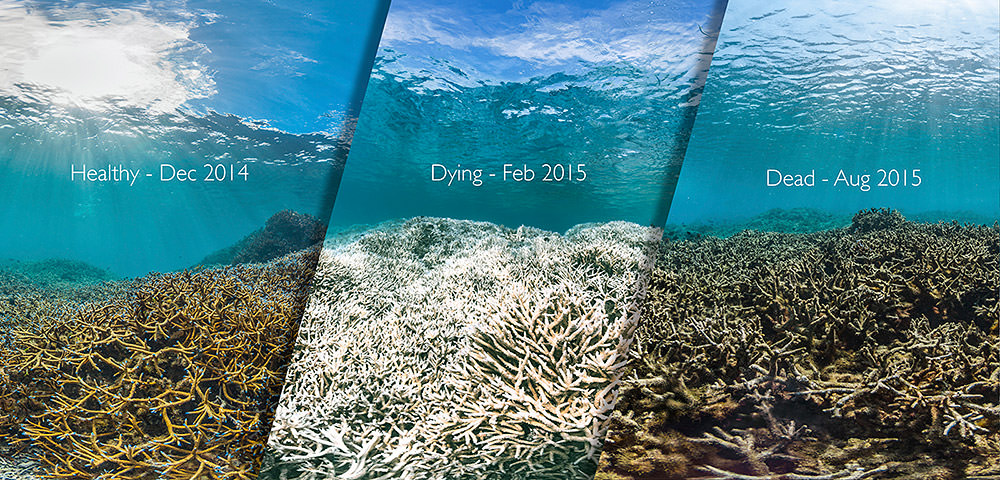
Research published in the Archives of Environmental Contamination and Toxicology documented damage beyond bleaching:
- DNA damage leads to deformities in coral larvae and prevents normal development.
- Reproductive failure occurs when chemicals disrupt hormones controlling coral spawning cycles.
- Viral infections spread as weakened immune systems leave corals susceptible to diseases like Stony Coral Tissue Loss Disease.
- Endocrine disruption affects not just corals but fish, sea urchins, sea turtles, and marine mammals throughout the food chain.
Which Chemicals Cause the Most Harm to Reefs?
Not all sunscreen ingredients pose equal risks. Some cause significantly more damage than others.
- Oxybenzone stands as the most studied and most harmful ingredient. Research shows it causes coral bleaching, DNA damage, and developmental abnormalities at concentrations as low as 62 parts per trillion. Oxybenzone becomes more toxic when exposed to sunlight. The same UV rays protecting your skin actually increase harmful effects on marine life.
- Octinoxate ranks second in documented harm. Studies show it disrupts coral reproduction and contributes to bleaching even at low concentrations. Like oxybenzone, it accumulates in marine tissues and affects the entire food web.
- Octocrylene has emerged as another serious concern. Research from 2025 confirmed it builds up in coral tissues and seawater, causing damage even at levels previously considered safe.
These three chemicals appear in most conventional sunscreens sold worldwide. Major brands like Coppertone, Neutrogena, Banana Boat, and Hawaiian Tropic commonly include one or more of them.
What Ingredients Should You Avoid in Sunscreen?
The Haereticus Environmental Laboratory created what they call the “HEL List” of chemicals shown to harm marine ecosystems. Check ingredient labels and avoid products containing any of these:
Primary offenders with most documented harm
- Oxybenzone (Benzophenone-3)
- Octinoxate (Octyl methoxycinnamate)
- Octocrylene
Additional harmful chemicals
- Homosalate
- Octisalate (Ethylhexyl salicylate)
- Avobenzone
- 4-Methylbenzylidene camphor
- PABA (Aminobenzoic acid)
- Parabens (Methylparaben, Butylparaben, Benzylparaben)
- Triclosan
- Dioxybenzone (Benzophenone-8)
Physical concerns
- Nano-sized zinc oxide or titanium dioxide (particles smaller than 100 nanometers)
- Microplastics or plastic microbeads

The nano-particle issue deserves extra attention. Zinc oxide and titanium dioxide are safe mineral alternatives. Some manufacturers shrink these minerals to nano-size to eliminate white appearance on skin. These tiny particles can be ingested by coral polyps and enter marine organisms, potentially causing harm similar to chemical filters.
Always look for “non-nano” on the label. If a mineral sunscreen rubs in completely clear without any white tint, it likely contains nano-sized particles.
What Makes Sunscreen Truly Reef Safe?
Truly reef safe sunscreens share specific characteristics:
- Mineral-based active ingredients only. The product should list only zinc oxide, titanium dioxide, or both as active ingredients. No chemical UV filters anywhere on the label.
- Non-nano particle size. The minerals should be larger than 100 nanometers. This prevents marine organisms from absorbing them. Look for “non-nano” or “micro-sized” on packaging.
- No harmful inactive ingredients. Even some mineral sunscreens include parabens or other problematic preservatives. Check the full ingredient list beyond just active ingredients.
- No microplastics. Avoid products with “exfoliating beads” or any form of plastic particles.
Chemical sunscreens absorb UV radiation and convert it to heat your body releases. This process requires chemicals to penetrate skin and enter your bloodstream.
Mineral sunscreens
Mineral sunscreens work differently. They sit on top of skin and physically reflect UV rays away. Because they do not absorb into skin, they do not enter your bloodstream at the same rates.
This physical barrier approach makes mineral sunscreens safer for both you and the ocean. The FDA currently recognizes only zinc oxide and titanium dioxide as “generally recognized as safe and effective” for sun protection. All chemical filters remain under review due to insufficient safety data.
Fun fact: The global mineral sunscreen market grows at 13.5% annually. That is nearly twice the rate of the overall sun care market. More travelers make the switch to reef-safe options every year.
Where Is Non-Reef-Safe Sunscreen Banned?
Growing awareness has led several destinations to take legislative action. These bans show how seriously the scientific community views sunscreen threats to marine life.
- Hawaii became the first U.S. state to ban harmful sunscreen ingredients. Act 104 took effect January 2021 and prohibits sale and distribution of sunscreens containing oxybenzone and octinoxate. Maui County went further in 2022, banning all non-mineral sunscreens without a prescription.
- Key West, Florida passed a similar ban on oxybenzone and octinoxate. Florida state lawmakers attempted to preempt local enforcement, but the city still actively encourages reef-safe products.
- U.S. Virgin Islands enacted one of the strictest bans, prohibiting oxybenzone, octinoxate, and octocrylene.
- Palau became the first country to ban reef-toxic sunscreens nationwide in 2020.
- Bonaire prohibits sunscreens containing oxybenzone, octinoxate, and octocrylene throughout the island.
- Aruba banned oxybenzone and octinoxate starting in 2020.
- Thailand prohibits harmful sunscreens in marine national parks.
- Mexico requires biodegradable sunscreens at many eco-parks, cenotes, and marine reserves throughout Riviera Maya and Yucatan Peninsula.
Does Costa Rica Have Sunscreen Restrictions?
Costa Rica has not enacted a nationwide ban on harmful sunscreen ingredients. Awareness is growing though, and several marine protected areas encourage or require reef-safe products.
Many tour operators throughout Costa Rica now request guests use only reef safe sunscreen before entering the water. This is common at popular snorkeling and diving destinations including Caño Island Biological Reserve, the Catalina Islands, and marine areas around the Osa Peninsula.
Several Costa Rican national parks with beach or marine access have begun posting signs encouraging reef-safe sunscreen use. These recommendations are not legally enforceable yet, but they reflect growing institutional awareness.
Costa Rica’s commitment to environmental protection and carbon neutrality goals suggest stricter regulations may come eventually. For now, responsibility falls on individual travelers to make informed choices.
How Do You Choose the Right Reef Safe Sunscreen?
Shopping for reef safe sunscreen requires more attention than grabbing the first bottle with a green leaf on the label. Here is how to identify products that actually protect marine ecosystems.
- Step one: Flip the bottle and read active ingredients. This section is clearly labeled and lists UV-blocking compounds. You want to see only zinc oxide, titanium dioxide, or both. Any other ingredient in this section means put the bottle back.
- Step two: Check for non-nano designation. Look for terms like “non-nano,” “micro-sized,” or particles larger than 100 nanometers. No specification usually means nano-particles.
- Step three: Scan inactive ingredients. Look for parabens, microplastics, or any chemical names from the HEL list. Some products use safe active ingredients but include harmful preservatives.
- Step four: Ignore marketing claims. Labels saying “reef safe,” “reef friendly,” “ocean friendly,” or “biodegradable” mean nothing without proper ingredients backing them up. These terms are unregulated.
- Step five: Choose lotion over spray. Aerosol sunscreens disperse into air and fall onto sand where they eventually wash into the ocean. Lotions, creams, and sticks give better application control and waste less product.
- Step six: Consider water resistance. Sunscreen that stays on skin longer releases less into water. Look for “water resistant 80 minutes” for best protection during swimming.
What SPF Level Do You Need for Tropical Destinations?
For tropical destinations, SPF 30 works as a minimum. SPF 50 provides excellent protection for extended water activities. Going higher than SPF 50 offers minimal additional benefit while often requiring more chemical filters.
SPF numbers indicate how much longer you can stay in the sun before burning compared to unprotected skin. SPF 30 blocks about 97% of UVB rays. SPF 50 blocks about 98%. Small difference, but every bit helps in tropical conditions.
Proper application and reapplication matter more than SPF number. Most people apply far too little sunscreen. You need approximately one ounce (a shot glass full) to cover an adult body. For face alone, use about a nickel-sized amount.
Reapply every two hours regardless of SPF level. Reapply immediately after swimming, heavy sweating, or toweling off. Water resistant does not mean waterproof.
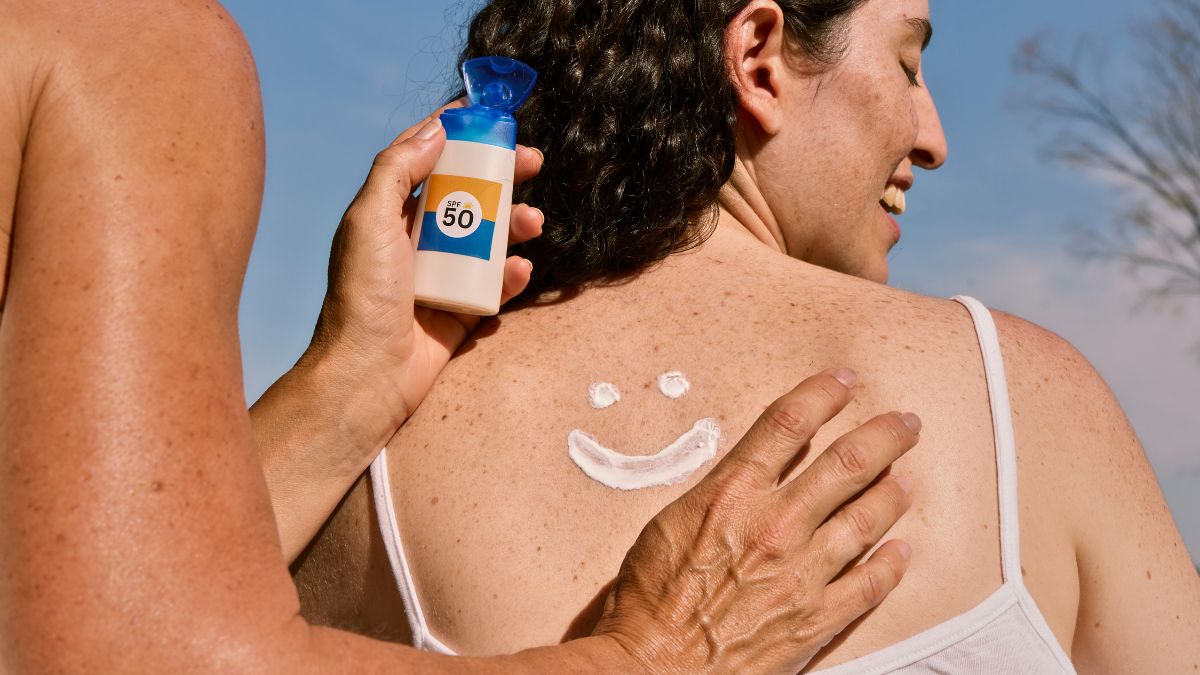
What Are Alternatives to Sunscreen for Sun Protection?
The most reef-safe option requires no sunscreen at all. Physical barriers provide excellent UV protection without any chemical entering the water.
- Rash guards and UPF clothing block UV rays through fabric density and weave. A UPF 50 shirt blocks 98% of UV radiation, equivalent to SPF 50 sunscreen. Unlike sunscreen, it never washes off or needs reapplication.
- Wide-brimmed hats protect face, ears, and neck when out of the water. Keep one on the boat for surface intervals.
- Dive skins and wetsuits cover most of your body during water activities. Even a thin 1mm skin provides UV protection along with thermal comfort.
- Seek shade during peak hours. UV radiation reaches maximum intensity between 10 AM and 2 PM. Schedule water activities for early morning or late afternoon when possible.
- Sun gloves and dive booties protect hands and feet. Two areas that burn easily and are awkward to keep sunscreened.
Combining physical protection with minimal reef safe sunscreen on exposed areas gives you the best results. You stay protected while dramatically reducing environmental impact.
Did you know? A long-sleeve rash guard can reduce sunscreen needs by up to 90%. Less sunscreen means less chemical runoff and more money saved on reef-safe products.
Are There Reef Safe Sunscreen Brands Made in Costa Rica?
Supporting reef-safe practices works best when you buy products made locally. Costa Rica has several small-batch producers creating quality reef safe sunscreen right here.
- Capuchino Surf Screen comes from Santa Teresa on the Nicoya Peninsula. This vegetarian, palm-oil free, biodegradable sunscreen is handmade in small batches. Ingredients include cacao butter, coconut oil, beeswax, and non-nano zinc oxide. The cacao gives it a natural brown tint that many surfers prefer over white zinc.
- Raw Love Costa Rica launched after the founders watched tourists applying toxic sunblock at Manuel Antonio beach. Their mineral formula uses non-nano zinc oxide and partners with different local nonprofits each month, donating proceeds to environmental and community causes.
- Jungle Mama was created by two women living in Costa Rica’s tropics. They grew frustrated with ineffective, chemical-laden products that migrated into their eyes during water activities. Their extreme face sunblock stick provides 80 minutes of water-resistant protection.
- Las Olas Suncare handmakes products using all-natural ingredients including cacao from local Costa Rican farms. The 20% zinc oxide concentration ensures strong protection while remaining safe for reefs.
- Osa Natural has operated on the Osa Peninsula since 2007, producing bath and body products with locally sourced organic coconut oil. Their reef-safe sunscreen line supports people interested in organic lifestyles and environmental protection.
Find these products at local farmers markets, surf shops, and eco-conscious stores throughout Costa Rica. Some ship internationally too.
Buying local reef safe sunscreen supports Costa Rican small businesses. Your sun protection did not travel thousands of miles to reach you. It also makes a great souvenir reflecting the environmental values Costa Rica represents.
Frequently Asked Questions
Is reef safe sunscreen as effective as regular sunscreen?
Yes. Mineral sunscreens with zinc oxide and titanium dioxide provide broad-spectrum protection against both UVA and UVB rays. The FDA recognizes these ingredients as safe and effective. Many dermatologists actually prefer mineral formulas for sensitive skin because they cause fewer allergic reactions.
Can I still get a tan while using reef safe sunscreen?
You can. Reef safe sunscreens reduce UV exposure but do not block 100% of rays. Some UV radiation still reaches skin, allowing gradual tanning. The goal of sunscreen is preventing damage though, not facilitating tanning. Want color? Consider a self-tanner and keep skin protected from harmful rays.
Why does reef safe sunscreen leave a white cast on my skin?
The white appearance comes from zinc oxide and titanium dioxide sitting on top of skin rather than absorbing into it. This is actually proof the sunscreen works as a physical barrier. Tinted formulas and proper application technique minimize the white cast. Rub product thoroughly and allow it to set before entering water.
Do I need reef safe sunscreen if I am not swimming near coral reefs?
Yes. Sunscreen chemicals do not stay where you put them. Water from beaches, pools, and showers eventually reaches the ocean. Chemicals also accumulate in freshwater ecosystems, harming fish and other aquatic life. Using reef-safe products everywhere reduces your overall environmental impact.
Is reef safe sunscreen safe for children?
Mineral sunscreens are often recommended for children and babies because they are gentler than chemical alternatives. Zinc oxide and titanium dioxide sit on skin surface without absorbing, making them suitable for sensitive young skin. Look for products specifically formulated for children with minimal added fragrances.
How do I know if a sunscreen is actually reef safe?
Read the active ingredients. Only zinc oxide and titanium dioxide should appear. Look for “non-nano” on the label. Ignore marketing terms like “reef friendly” or “ocean safe” since these are unregulated. Check inactive ingredients for parabens and other harmful chemicals.
Does waterproof sunscreen exist?
No sunscreen is truly waterproof. The FDA banned the term “waterproof” from sunscreen labels because it misleads consumers. Products can only claim “water resistant” for either 40 or 80 minutes. After that time, or after toweling off, you must reapply.
Related Articles
- Scuba Diving in Costa Rica: Complete Guide
- Best Snorkeling Spots in Costa Rica
- What is the best time to visit Costa Rica?
- Sea Turtles in Costa Rica
Sources and References
- National Oceanic and Atmospheric Administration (NOAA)
- Archives of Environmental Contamination and Toxicology
- U.S. Food and Drug Administration – Sunscreen Products
- Hawaii Department of Land and Natural Resources
- Haereticus Environmental Laboratory – HEL List
- National Park Service – Sunscreen and Coral Reefs

